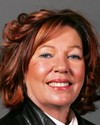As I mentioned before, in addition to the French first language school, we have French immersion schools as well that go all the way up to grade 12. So again it becomes a parental and student choice as to where they want to move forward. But we have a lot of opportunities for students to take French language.
Just as an example from funding, because of the Department of Education, we enter into a separate bilateral agreement with the federal government on French education. We just renewed our new agreement, which runs from 2009 to 2014. Again, we have the same issue where the money is limited. We just renewed the agreement in 2009, but the actual value was the same as it was in the previous agreement, although we have increased costs when you look at the cost of increases for your teachers, your cost of running your schools, and the number of students we have.
Just to give you a breakdown so you have an idea of the amount of funding, the bilateral agreement is approximately $2.2 million annually from Canada and approximately $6 million annually for the Yukon over the five-year period. So for French first language, Canada provides $1.2 million, while the Yukon contributes $2.3 million. For French second language, the federal contribution is just under $1 million, and the Yukon contributes $3.7 million annually over that five-year agreement. That's just to give you an indication of the level of funding that's coming into the Department of Education for French schools.
The other part of it that makes it a little unique is that the Department of Education performs many functions that most jurisdictions would delegate to school boards or school districts. As I mentioned, the francophone school board is the only school board in the Yukon. So the department has a dual role, the ministry and department. A lot of the services we provide are outside of what would normally be covered in other jurisdictions in the bilateral. We provide these services, again, at our own cost.
Just as an example, some of our translation costs that would not be covered under the bilateral would run between $40,000 to $50,000 a year, which is coming from the Department of Education budget because of our unique aspect. So we go forward with our numbers and bring our case forward. We show the number of students that are enrolled in French first language, almost 50% of our students who are enrolled in the second language, and yet the numbers remain the same.



